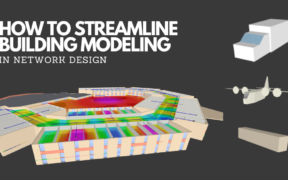Category: 5G

Smart cities are rapidly becoming a reality, with many municipalities across the world investing in digital infrastructure to increase efficiency and improve citizen experiences. To reach their fullest potential, smart cities must leverage private wireless networks to provide high-speed data connectivity between critical applications. Understanding the Need for Private Wireless Networks in Smart Cities Smart […]

In the realm of wireless network design, where time is often of the essence, building modeling emerges as one of the most time-consuming aspects of the process. This blog post is dedicated to unraveling the critical role of building modeling, emphasizing the imperative for increased speed, simplicity, and precision. We’ll also delve into the challenges […]

In the dynamic landscape of private networks, a revolutionary solution is transforming the way we approach connectivity challenges—Cell on Wheels (CoW). This mobile infrastructure, highlighted in a recent webinar by iBwave and Amazon Web Services (AWS), goes beyond the conventional, offering a versatile and adaptable approach to private networks. As we delve into the intricacies […]
